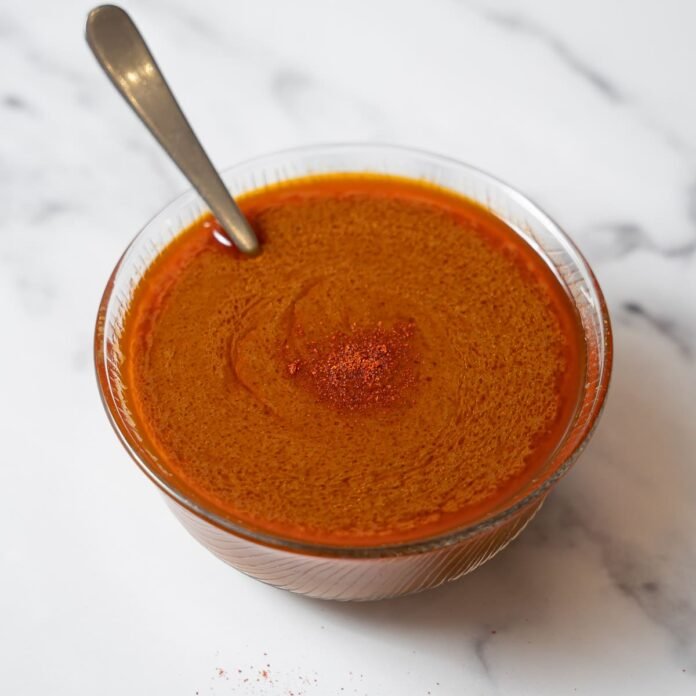If you’ve been to a Spanish tapas bar, you’ve probably experienced the joy of patatas bravas. This classic, cheap tapa is a simple combination of fried potatoes and bravas sauce (salsa brava): a bright red, slightly spicy condiment that elevates it to the next level. Here’s how to make this sauce at home!
Of course, use your homemade bravas sauce for patatas bravas. You can also serve this tapa with garlic alioli for a delicious touch!
Jump to:
Introduction
Authentic bravas sauce relies on a few key ingredients, like Spanish olive oil, but the real secret is pimentón (paprika). Spanish paprika comes in sweet (pimentón dulce) and hot (pimentón picante), and a combination of both is ideal for bravas sauce.
Bravas sauce (and patatas bravas) most likely originated in Madrid at the now-closed bars Casa Pellico or La Casona. However, others claim that Calle Álvarez del Gato is the real source, which is where the Las Bravas bar serves their legendary bravas sauce.
Regardless of the exact origin of bravas sauce, both the sauce and the fried potato tapa are iconic symbols of Madrid’s culinary scene. Get a taste of Madrid by making your own bravas sauce!
Ingredients
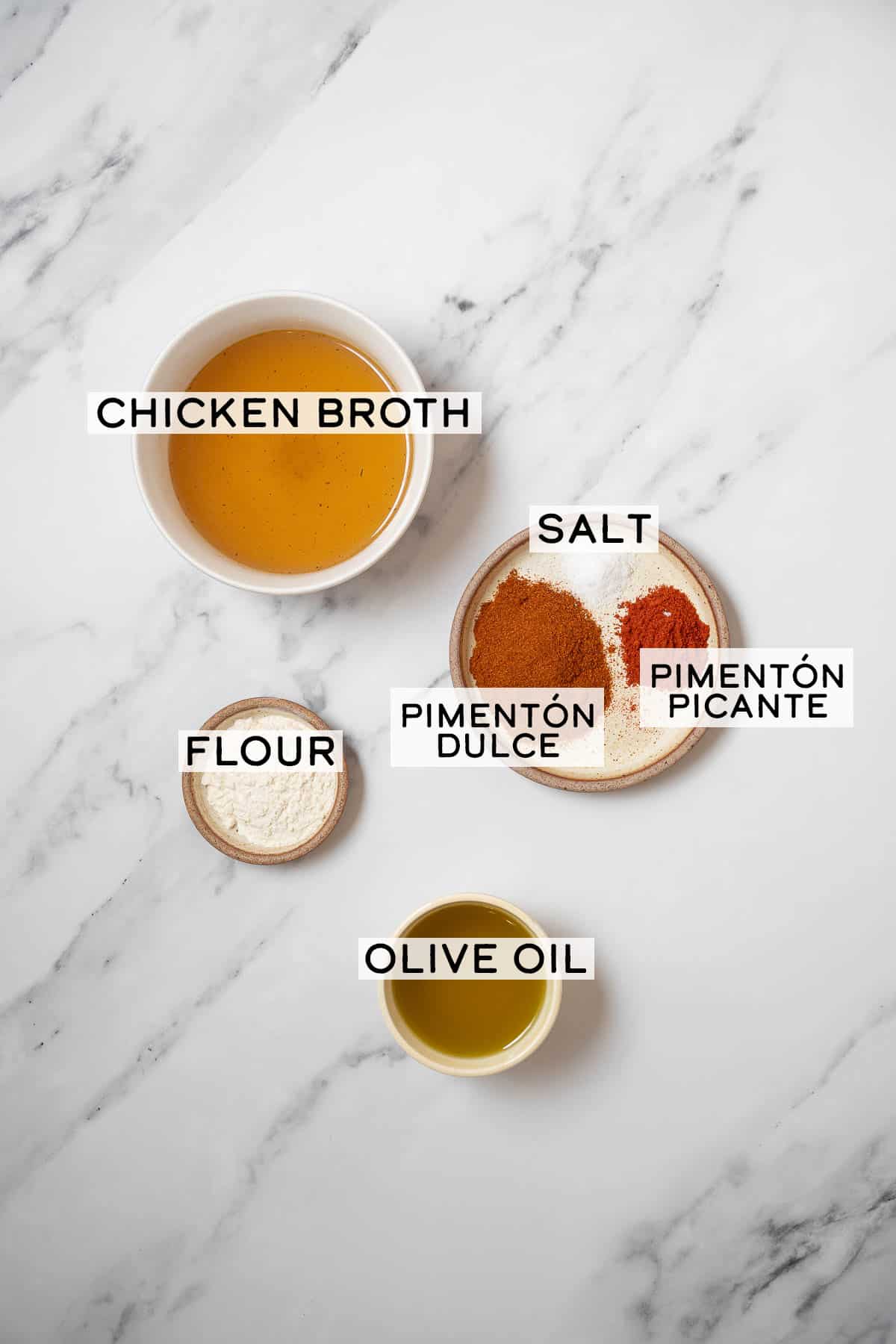
Wondering what ingredients you need to make your own bravas sauce? Fortunately, you only need 6 simple ingredients! Let’s talk about them.
- Olive Oil: Like most Spanish recipes, this is a key ingredient! Choose a Spanish olive oil if possible; otherwise, use a good-quality extra virgin olive oil for an excellent flavor.
- Paprika: For bravas sauce, you’ll need both sweet paprika (pimentón dulce) and hot smoked paprika (pimentón picante). Adjust the balance between sweet and hot paprika based on your taste.
- Chicken Broth: Not only does this add a rich flavor to the sauce, it also stretches it. I recommend using homemade chicken broth if you have some in the fridge or freezer.
See recipe card for full information on ingredients and quantities.
Variations
- Can’t find hot smoked paprika? Use cayenne pepper, order it online, or check at a specialty food shop.
- Gluten Free: Replace the 1 tablespoon of all-purpose flour with 1 ½ teaspoons of cornstarch or arrowroot powder. Mix it with a little cold water to make a slurry before adding to the sauce to prevent lumps.
- Vegetarian/Vegan: Use vegetable broth instead of the chicken broth.
How to Make Bravas Sauce
If you’d like to see the full ingredients and instructions, scroll to the bottom of the post for the printable recipe card.
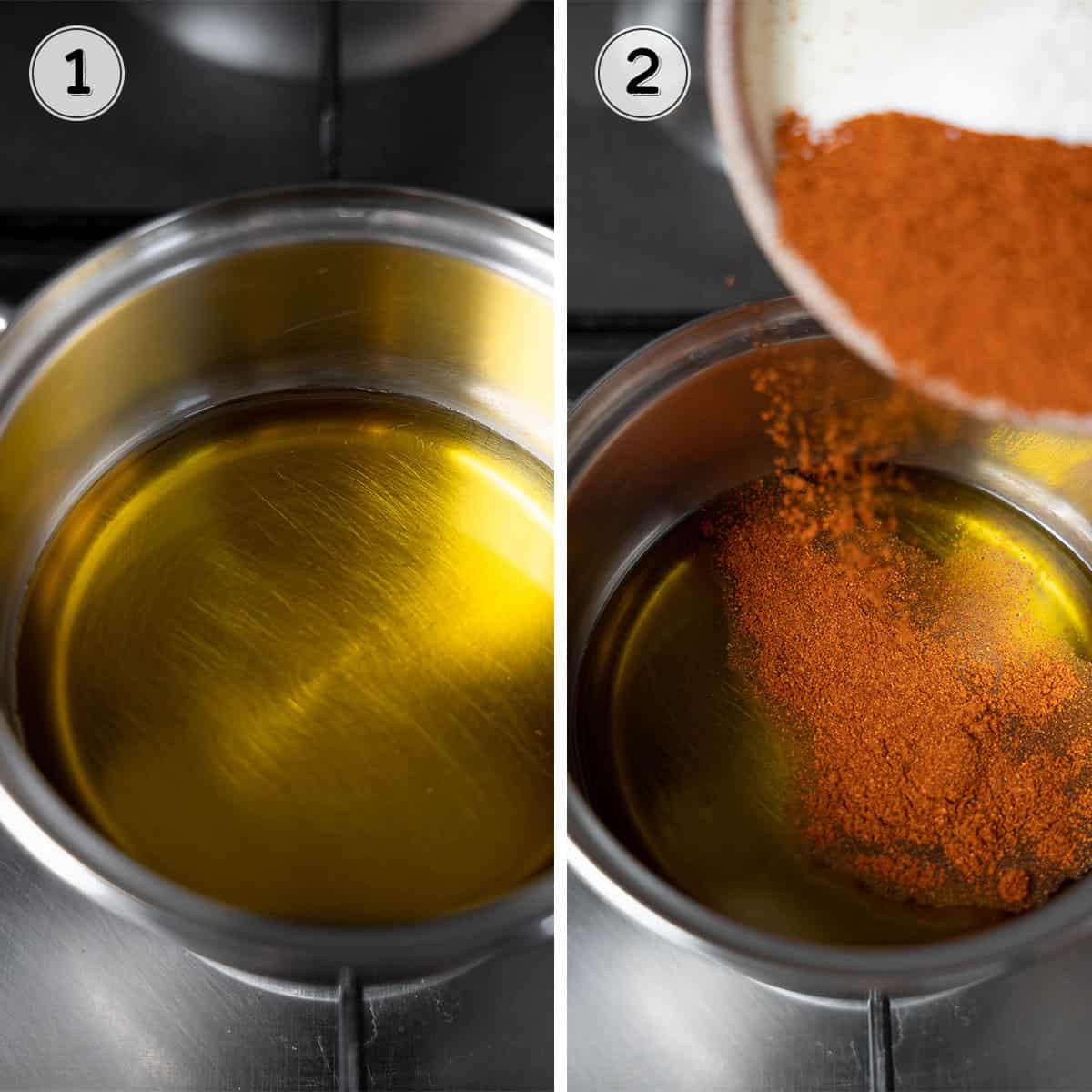
- Heat the olive oil in a saucepan. (image 1)
- Add the hot and sweet smoked paprika to the oil. (image 2)
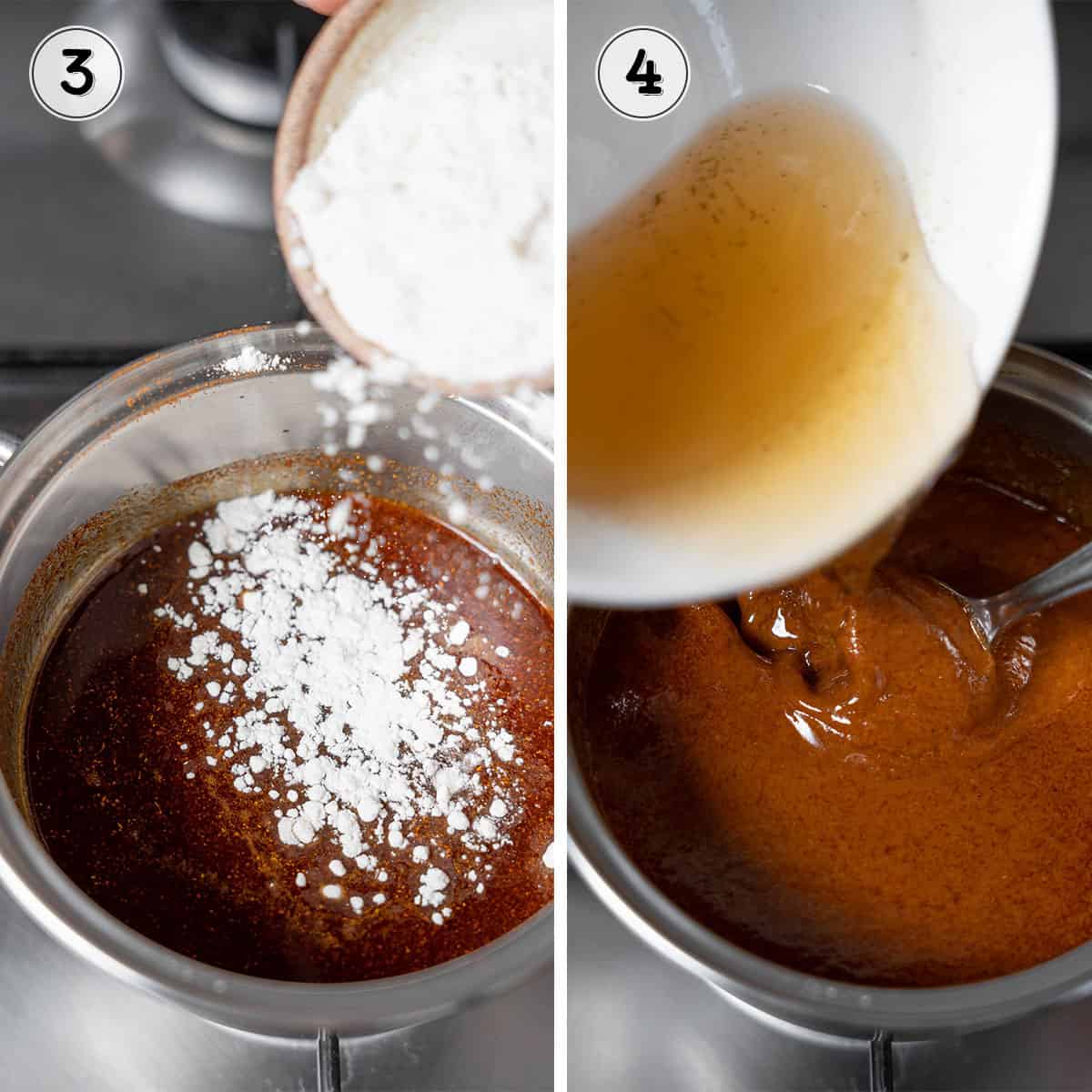
- Sprinkle in 1 tablespoon of flour and stir to combine. Cook for 1 minute to lightly toast the flour. (image 3)
- Gradually add the chicken broth. The sauce will thicken as it continues to cook. Add a little extra flour if needed to give the sauce a pourable but velvety smooth consistency. (image 4)

- Reduce the heat to low and gently simmer the sauce until it’s thick and smooth, about 5 minutes. (image 5)
- Season with salt to taste, then pour the bravas sauce into a bowl to cool. (image 6)
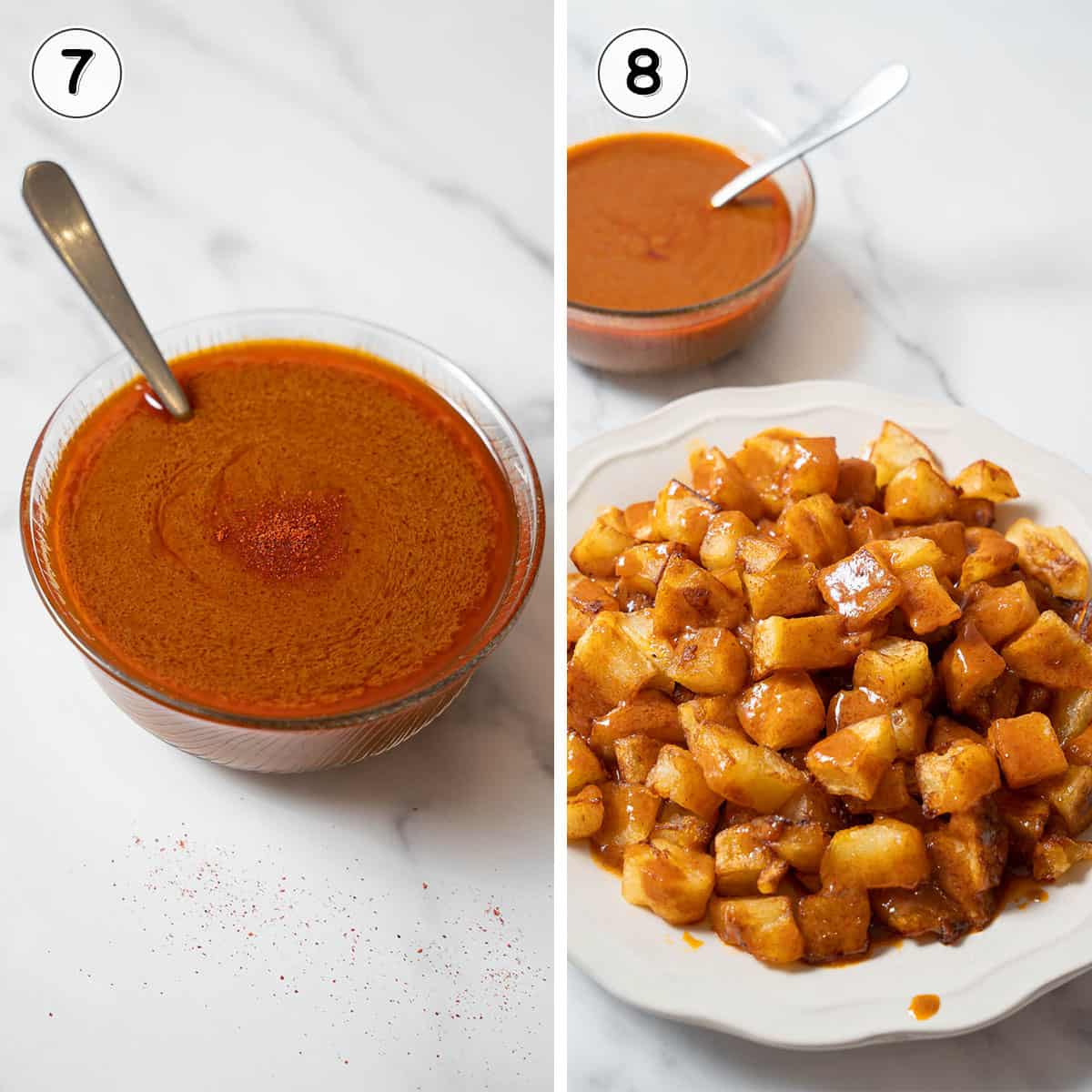
- If you’re not eating the sauce right away, store in the fridge until you’re ready to serve it. (image 7)
- Enjoy on hot fried potatoes to make patatas bravas! (image 8)
Recipe FAQs
Bravas sauce consists of Spanish olive oil, hot and sweet smoked paprika, flour, chicken broth, and salt to taste. These simple ingredients combine to make a mouthwatering spicy sauce!
Bravas means “spicy” in Spain, so bravas sauce would translate to “spicy sauce.”
Leftover bravas sauce will keep for 3-5 days in the refrigerator. Make sure to stir it well before serving. I wouldn’t recommend freezing it, as the texture of the sauce won’t be the same when defrosted.
Serve
Traditional Spanish chefs don’t use bravas sauce for any snack other than patatas bravas. However, what you do in your own kitchen is up to you. If you want to slather bravas sauce over anything, I support that!
I’d recommend serving patatas bravas with a variety of popular Spanish tapas, such as fried calamari (calamares fritos), pimientos de Padrón, fried eggplant with honey, bacon wrapped dates, or boiled shrimp (gambas cocidas).
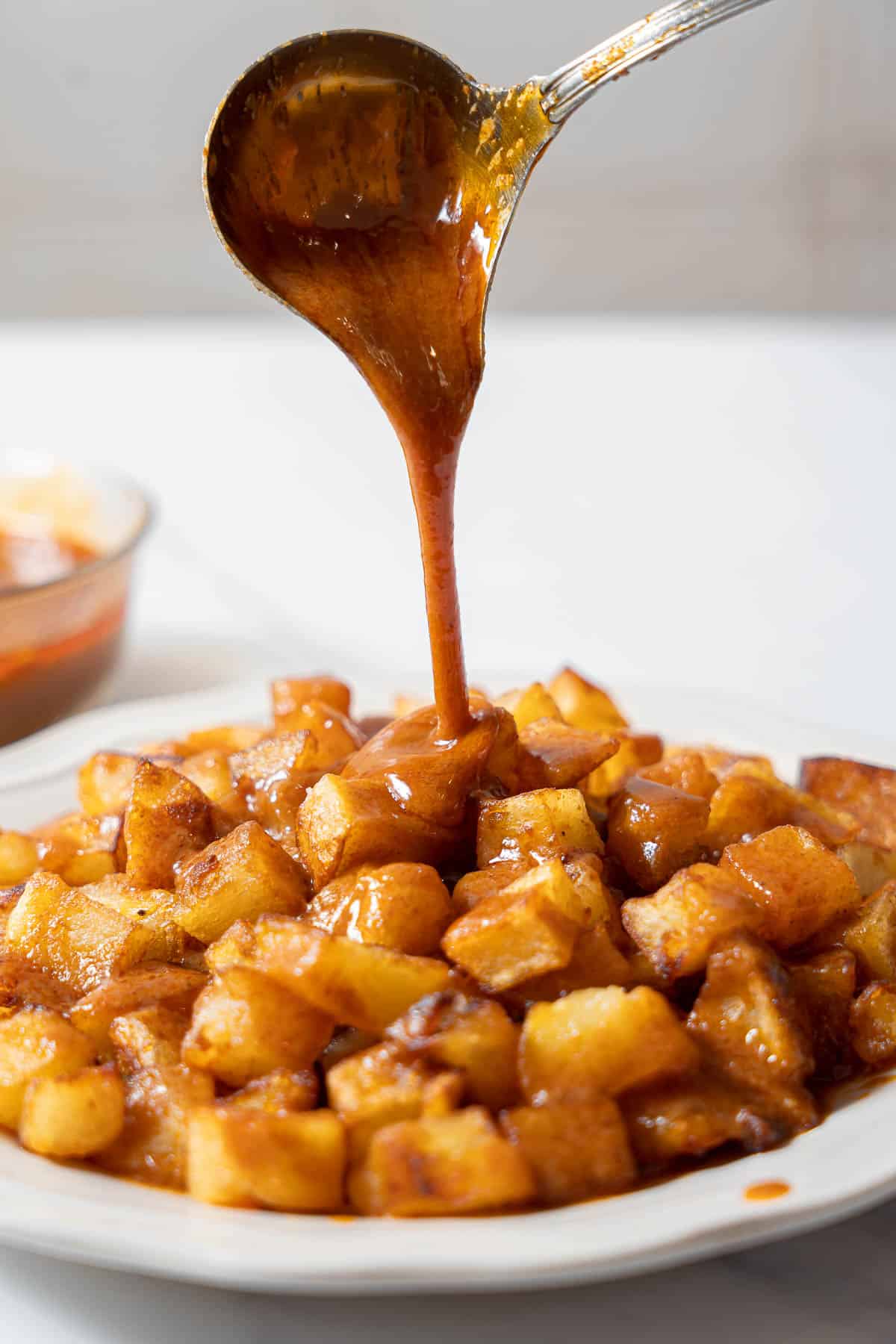
Expert Tips
- Bravas sauce should be bright reddish-orange and neither thin nor creamy—perfect for artistic drizzling.
- Adjust the level of spiciness by increasing the ratio of pimentón picante, or by adding a bit of hot sauce.
- Leftovers will keep in the fridge for a few days; just make sure you stir well to restore the original consistency.
Other Spanish Sauces
If you liked this recipe, please share it with others!
Follow Spanish Sabores on Facebook, Twitter, Pinterest, and Instagram for more recipes and travel tips.
If you’ve made and enjoyed this recipe, please leave a 5-star review!
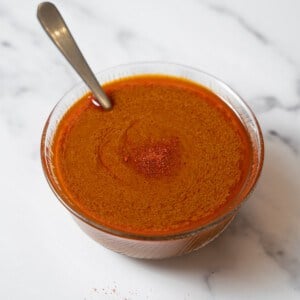
Bravas Sauce Recipe (Salsa Brava)
This spicy, 6-ingredient bravas sauce is an essential element of the popular Spanish tapa patatas bravas. Adjust it to your taste by varying the level of spiciness!
Print (images optional)
Pin
Rate
Servings: 4 servings
Calories: 189.72kcal
Instructions
-
Heat the olive oil in a small saucepan over medium heat. Add the hot and sweet smoked paprika and stir until combined.
-
Add 1 tablespoon of flour and stir until combined. Keep stirring for about a minute to toast the flour slightly.
-
Over a medium-low heat, add the broth very gradually, stirring constantly. The flour will absorb the liquid and leave you with a delicious sauce.
-
The sauce should start to thicken as you incorporate the broth; add more flour only if necessary to achieve the right consistency. It should be velvety and smooth, but not so thick that it holds its shape alone.
-
Reduce to low heat and simmer for 3-5 minutes, stirring occasionally. Season with salt to taste.
-
Drizzle over some fried potatoes and enjoy!
Notes
- The finished product should be bright reddish-orange and neither thin nor creamy—perfect for artistic drizzling.
- You can adjust the level of spiciness by increasing the ratio of pimentón picante, or by adding a bit of hot sauce!
- Leftovers will keep in the fridge for a few days; just make sure you stir well to restore the original consistency.
Nutrition
Calories: 189.72kcal | Carbohydrates: 5.67g | Protein: 1.49g | Fat: 19.09g | Saturated Fat: 2.66g | Sodium: 293.12mg | Potassium: 215.49mg | Fiber: 2.58g | Sugar: 0.77g | Vitamin A: 3639.87IU | Vitamin C: 4.11mg | Calcium: 20.45mg | Iron: 1.87mg


